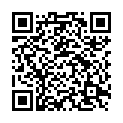|
|
|
| Module code: E2607 |
|
|
2V+1U+1P (4 hours per week) |
|
4 |
| Semester: 6 |
| Mandatory course: yes |
Language of instruction:
German |
Assessment:
Written exam, practical exam with composition (2 lab experiments, ungraded)
[updated 08.01.2020]
|
E2607 (P211-0083, P211-0084, P213-0071, P213-0072) Electrical Engineering and Information Technology, Bachelor, ASPO 01.10.2018
, semester 6, mandatory course, Kategorie 1 (electrical)
|
60 class hours (= 45 clock hours) over a 15-week period.
The total student study time is 120 hours (equivalent to 4 ECTS credits).
There are therefore 75 hours available for class preparation and follow-up work and exam preparation.
|
Recommended prerequisites (modules):
None.
|
Recommended as prerequisite for:
|
Module coordinator:
Prof. Dr.-Ing. Stefan Winternheimer |
Lecturer: Prof. Dr.-Ing. Stefan Winternheimer
[updated 10.09.2018]
|
Learning outcomes:
After successfully completing this course, students will be able to analyze an electrical machine as a drive or power supply network component and use parameters of its equivalent circuit to calculate operating characteristics. They will know the morphological differences between different machine types and their influence on machine behavior in stationary condition. Students will be able to relate the general equation for torque as a derivative of the magnetic energy stored in the air gap to the equations of torque-speed or torque-angle curves of conventional machine types. They will thus, be able to successfully handle complex topics from the field of electrical machines and drives and be able to apply the required analysis tools later in their career or during the Master´s program.
[updated 08.01.2020]
|
Module content:
1. Induction machine in steady state 1.1 Construction and operating principle of induction machines 1.2 Effects of the fundamental wave of the air-gap flux density on induction machines 1.3 Effects of the harmonic waves of the air-gap flux density on induction machines 1.4 Self-excited induction machine 1.5 Single-phase machine 1.6 Capacitor braking 1.7 Speed control in induction machines 2 Commutator machine in steady state 2.1 Operating behavior of a direct current machine 2.2 Induced voltage and electromagnetic moment 2.3 Armature reaction 2.4 Commutation 2.5 Direct current generators 2.6 Direct current motors 2.7 AC commutator machines 2.8 Speed control in commutator machines 3 Synchronous machine in steady state 3.1 Design features of synchronous machines 3.2 Armature reaction and synchronous reactance 3.3 Operating characteristics of cylindrical-rotor synchronous machines on a rigid grid 3.4 Salient pole machines 3.5 Permanent magnet excited synchronous machines
[updated 08.01.2020]
|
Teaching methods/Media:
Transparencies, blackboard, lecture notes and electronic handouts
[updated 08.01.2020]
|
Recommended or required reading:
Eckhardt, Hanskarl: Grundzüge der elektrischen Maschinen, Teubner, 1982 Richter, Rudolf: Elektrische Maschinen, Band 1: Allgemeine Berechnungselemente, Birkhäuser, 1951
[updated 08.01.2020]
|


